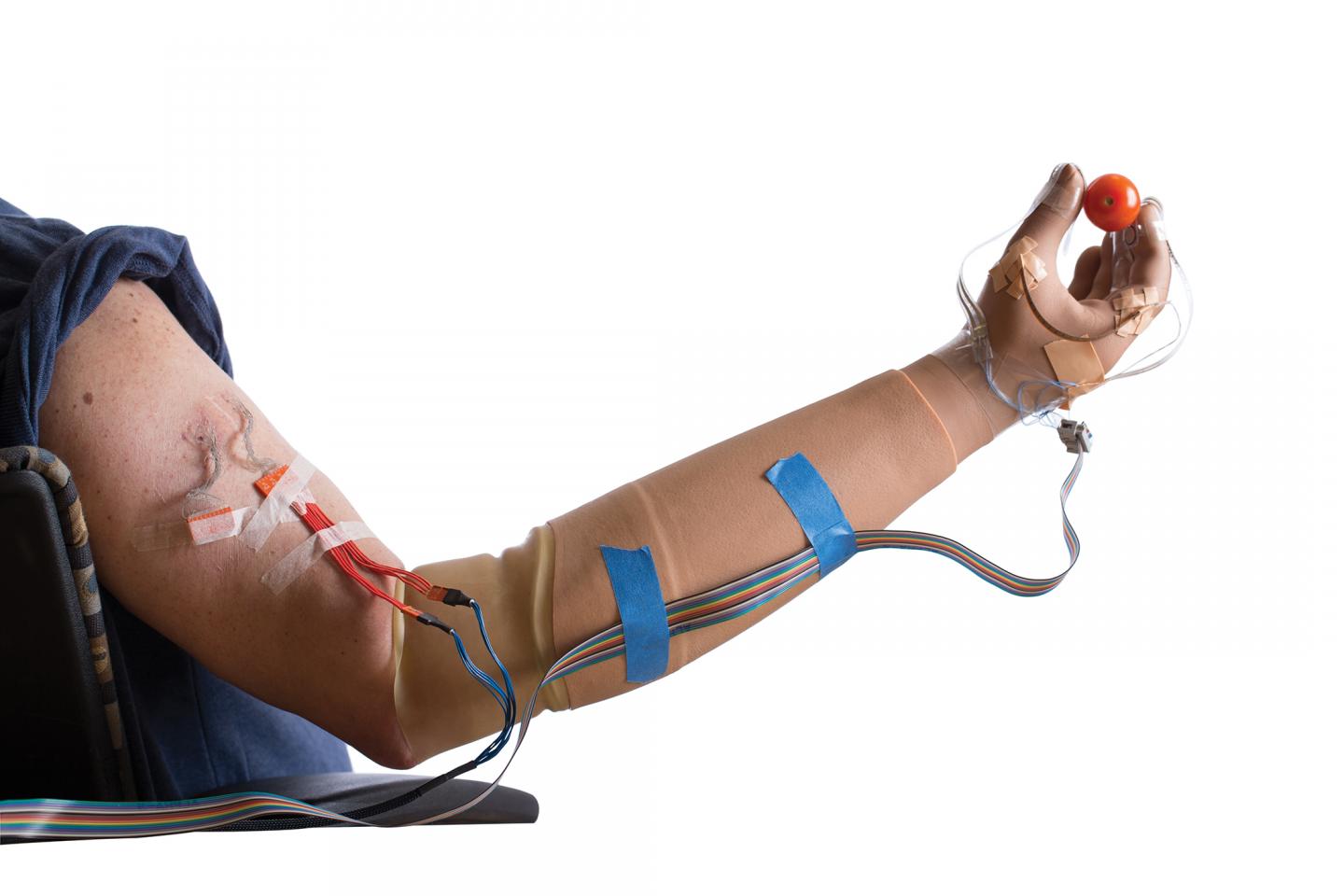Podcast: Play in new window
BOB HIRSHON (host):

Artificial hands with a sense of touch. I’m Bob Hirshon and this is Science Update.
To make prosthetic hands truly useful, they need not only to move, but also to feel. Otherwise, it’s nearly impossible to pick up an egg, peel a banana, or just hold the hand of a loved one. In the journal Science Translational Medicine, Case Western Reserve University researcher Dustin Tyler and his colleagues describe artificial hand sensors.
DUSTIN TYLER (Case Western Reserve University):
We have placed electrodes around each of the three main nerves that go to the hand, which are the medial, ulnar and radial, and so around each of the nerves we’ve placed eight little electrical points. And when you turn those on each of them gives us a unique location on the hand.
HIRSHON:
Varying the intensity of the signals simulates touch. The research is still in its early stages, but so far patients have been able grip grapes and cherries without crushing them, and even gently hold and feel their spouse’s hand.
I’m Bob Hirshon, for AAAS, the science society.
